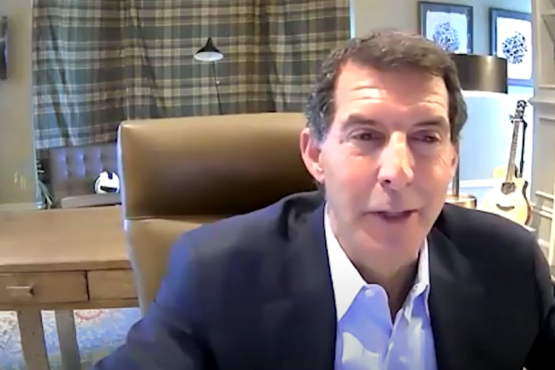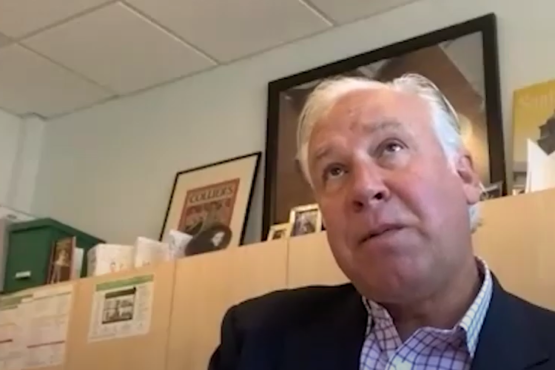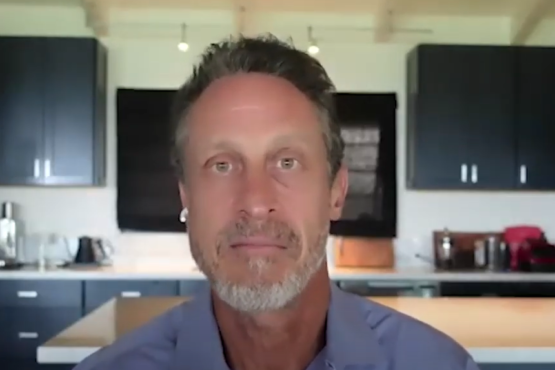In today’s episode we have Aaron Gani, CEO and co-founder of BEHAVR joining us. Aaron Gani is the founder and CEO of BEHAVR, which creates digital therapeutics for behavioral health through the unmatched psychological power of virtual reality. He’s on the cutting edge of creating innovative, consumer centered, technological solutions to some of our major health challenges. Aaron previously served as chief technology officer of Humana, and was a founding member of the strategic advisory board of the Digital Medicine Society, and a founding advisory board member of the International Virtual Reality Healthcare Association. Wait til you hear about the unparalleled promise Aaron is seeing in the application of virtual reality to behavioral health.

Bill Frist: Welcome to A Second Opinion Podcast where we are rethinking American health. I’m your host, Senator Bill Frist. To make sense of all the dynamic perspectives in healthcare, you need a trusted source engaging at the intersection of policy, medicine, and innovation. You need a second opinion, a podcast where it all comes together.
Bill Frist: In today’s episode we have Aaron Gani, CEO and co-founder of BEHAVR joining us. But before we get started, I want to thank our sponsors. A Second Opinion is powered by MEDHOST, a trusted EHR for health care facilities. We’re also brought to you by Change Healthcare, leading the healthcare transformation by collaborating with providers, payers, and technology partners to accelerate the journey to a value based healthcare system. For more information, visit ChangeHealthcare.com/ASecondOpinion.
Bill Frist: Now let’s turn to the episode. Aaron Gani is the founder and CEO of BEHAVR, which creates digital therapeutics for behavioral health through the unmatched psychological power of virtual reality. He’s on the cutting edge of creating innovative, consumer centered, technological solutions to some of our major health challenges. Aaron previously served as chief technology officer of Humana, and was a founding member of the strategic advisory board of the Digital Medicine Society, and a founding advisory board member of the International Virtual Reality Healthcare Association. Wait til you hear about the unparalleled promise Aaron is seeing in the application of virtual reality to behavioral health.
Bill Frist: And now please join me and our guest for A Second Opinion. Aaron Gani, thank you for being with us today.
Aaron Gani: Thank you for the invitation.
Bill Frist: In the next, oh, 20, 25 minutes or so, let’s really explore this whole field, sector, arena, I’m not even sure what to describe it, but of virtual reality. When people hear virtual reality, all sorts of images pop up in their own minds, but so let’s start off with a definition of what virtual reality is, and describe it a little bit. Is it a tool? Is it a technique? Is it instrumentation? Where do you start when people say, “VR, virtual reality, what is it?”
Aaron Gani: First I guess I’d share, virtual reality is not all that new. It’s actually been around for probably pushing three decades, mostly in lab settings, university research labs and the like. And through those years the experiences tended to be kind clunky, kind of low tech, very expensive, bulky, inefficient hardware and the like. But it still caught people’s imagination to a great degree because of the unique way that our brains experience virtual reality. So while there’s not one perfect definition, the way I like to describe it to people is if we use technology to create a multisensory set of inputs to our brain, our brain then processes that in a way that because the sensory input comes through the same channels that we experience daily life through, it feels very real. So your prefrontal cortex may be saying, “Well, I know this is a simulation.”
Bill Frist: Yeah.
Aaron Gani: But the rest of your brain, so of your lizard brain, really kind of can’t tell the difference. All of that experience of the world comes in in a way that feels natural, and when certain things happen, when we interact with the world, we do things like we move our head, well, visuals change, and angles change, and effects change and the like when we experience and interact with the world, and we touch, and we hear, and we sense our realities. Virtual reality should be thought of in that way.
Aaron Gani: We often think of it as a visual display that’s sort of … our visual sense is very powerful and that’s where a lot of today’s technology is. But I always encourage people to think about it in a multisensory way.
Bill Frist: Yeah.
Aaron Gani: Sight, and sound, and touch, and smell, and all of those things are going to become increasingly prevalent. And when we engineer our replacement of our natural world experience with digitally created inputs, our brains sort of says, “Well, I’m experiencing that.” So that’s what’s different.
Bill Frist: So are we tricking in the brain or are we … do these input set up the same channels through the brain with the same synapses in the same connection? What’s actually happening when the virtual reality versus real reality? Is it the same channels going through the brain?
Aaron Gani: It is, and so that’s the really interesting part is would we call that a trick? Well, I don’t know. At the level where the signals are actually getting processed by the brain, they come in in the same way that our experience of the real world does.
Bill Frist: Yeah. Yeah.
Aaron Gani: So it’s less a trick and maybe more of a hijack if we want to use a phrase to describe it.
Bill Frist: Yeah, yeah, yeah.
Aaron Gani: But instead of seeing what we’re accustomed to seeing or touching or hearing in the real world, we’ve replaced that with an engineered experience.
Bill Frist: Yeah. What does technology change? Obviously the gaming world is where people see most of the technology today. You show this to people and they will basically say, “Oh yeah, you’re a gamer.” What technology, what’s advanced so much in the last four years that’s made it possible for virtual reality to be within the reach of consumers?
Aaron Gani: What changed from a technology perspective, there was a series of events starting around 2013, 2014. There is a young guy named Palmer Luckey in a university lab setting that had an insight and he said, “You know, the, … ” and as I mentioned earlier, VR has been around a long time.
Bill Frist: Yeah.
Aaron Gani: But what had changed, in the smartphone era that we’re in, we’ve got these cheap, ubiquitous sensors, we’ve got flat screen displays, we’ve got amazing graphics and processing power on small lightweight chips. And Palmer and his colleague said, “You know, it’s time to take another run at this whole virtual reality thing,” which had been tried before and never really come out of the lab successfully. And so he put a Kickstarter company together, called it Oculus, raised a couple of million dollars almost overnight, built some prototypes, raised a little bit of venture capital, but relatively early in the life of that company, Mark Zuckerberg had a look at what was happening with that technology and sensed that this is the future of computing and it’s going to change our relationship with computing. And he bought Oculus for somewhere around two and a half billion dollars. And that was a moment.
Bill Frist: Yeah, yeah.
Aaron Gani: So that really set off the gold rush and capital pouring in, and now there are many companies doing things, but that’s what’s led to this consumer grade era of VR.
Bill Frist: And so we’ll move to health care because that’s what you have … in your company has taken a leadership role in, your company being BEHAVR, and let’s come to that. But before embarking on that, because that’s to me what’s really exciting, where this technology is applied to health, and wellbeing,, and prevention and treatment. But why did you get involved with it? When we first met, you were at Humana, another very innovative health service company, but a little bit about your personal journey, tell me.
Aaron Gani: Certainly. So I’m a lifelong technologist, I’ve always enjoyed creating applications and experiences with technology.
Bill Frist: As a kid?
Aaron Gani: All the way from childhood. That’s all I’ve ever done. I’ve loved it, it’s just a passion and-
Bill Frist: Yeah.
Aaron Gani: And I really enjoy it. And did that throughout my career in financial services for many years. But then I was fortunate to join healthcare when I joined Humana in 2006.
Bill Frist: Yeah.
Aaron Gani: And you mentioned it, Humana’s an amazing company with the majority of their members are Medicare Advantage members, that leads to generally long relationships with their members. So Humana could afford to make investments in health. Really investing in how do we keep these members healthier, keep them at home, keep them out of the hospital, that’s the win-win in the healthcare system, right? The patients better, the payer’s better, the taxpayer’s better off, etc.
Aaron Gani: So I got that bug, caught that bug at Humana of how rewarding it is to work on how do we get and keep people healthier? And now in spite of all of that, all of our collective efforts in the industry have yet to move the needle on chronic disease to the degree that we need to. If we’re going to really reverse this unsustainable spending problem that we have and move that needle. In spite of all our efforts at Humana and in the industry generally, we have yet to collectively move the needle to the degree that we need to on preventing and reversing chronic disease.
Bill Frist: Yeah.
Aaron Gani: And in order to do that, I believe we have to help people go from knowing what they should do to improve their health, to give them more ability to actually do it. Knowing is not enough.
Bill Frist: Yeah.
Aaron Gani: And I sometimes think of that as like the last mile of behavior change. I know what I should do. How do I actually get there?
Bill Frist: Yeah, yeah.
Aaron Gani: Right? And so that is a huge problem that somebody needed to take on. I was at a point in my life and career where as much as I enjoyed the platform and the incredible opportunity at Humana, I felt like embarking on my own path would give me a little more flexibility to take on that problem in a unique way, and make a contribution in that way.
Bill Frist: And what was your position at Humana?
Aaron Gani: When I left Humana, I was the chief technology officer there.
Bill Frist: And was this technology one that just came your way? I understand the you like the tinkering, and the things and all. Did it come as a device or did it come as I want to really improve through the course of health and health care, and this is a way to do it that I’ve seen in looking around and seizing it? Or is this a technology that you used to play with a long time ago now?
Aaron Gani: No, it was a confluence of a couple of things. I had been planning and plotting for many years to form my own company and create my own company. I knew that I wanted to take on a really, really big important problem because it’s a a point in my life where it’s not about economics, it’s about impact.
Bill Frist: Right.
Aaron Gani: And in my estimation, there is no bigger problem than helping people improve their health at the scale that we need to to reverse chronic disease and the unsustainable spending. So I knew that was the problem to take on. On the technology side, being a bit of a technology geek my whole life, you track and you’re watching trends-
Bill Frist: Yeah, sure.
Aaron Gani: And seeing what’s happening in the industry, whether it’s early days of personal computing,, and mobility and cloud, and analytics and so on. And so what I was aware of around the time I was forming the company was that moment, because of the Facebook Oculus acquisition and so on, this moment in time where consumer grade VR was upon us. And I knew and sensed then, I have a better appreciation now three years later, but knew this was really psychologically powerful, this medium.
Bill Frist: Yeah.
Aaron Gani: That there was a moment with this uniquely powerful medium combined with these other exponential technologies of cloud, and machine learning and analytics, and health data interoperability and mobility, there’s a moment in time that we have here where we can bring those things together to create a really powerful new mechanism to improve behavioral health. And in our specific case, targeting behavior change.
Bill Frist: So behavior change, behavioral health, and we know if you look at environment, you look at health care delivery, you look at genetics, that really does come back to the most powerful thing, much more powerful than any of those in terms of health, not just healthcare. It is behavior.
Bill Frist: And now a quick word from our sponsors that make this podcast possible.
Bill Frist: For 35 years, MEDHOST has been partnering with community hospitals and specialty healthcare facilities to focus on what matters most. Effectively taking care of their patients. Trusted by over a thousand health care facilities, MEDHOST offers a full suite of healthcare, IP, and business solutions, including an EHR in emergency department information system. Health care providers need a partner who could help them meet patient needs with agility. Backed by world-class support, MEDHOST solutions are an ideal match for facilities wanting to enhance patient care. To learn more, go to medhost.com.
Bill Frist: Change Healthcare is inspiring a better healthcare system. Change Healthcare provides data and analytics driven solutions to improve clinical, financial, and patient engagement outcomes in the US healthcare system. Change Healthcare’s comprehensive suite of software, analytics, technology enabled services, and network solutions take cost out of the healthcare system by driving improved results in the complex workflows of payers and providers. By enhancing clinical decision making, simplifying billing, collection, and payment processes, and by enabling a better patient experience. For more information, please visit ChangeHealthcare.com/ASecondOpinion.
Bill Frist: And now back to the episode.
Bill Frist: So tell me about the company BEHAVR. What problem does BEHAVR focus on, or what are you setting out to solve in this world? So what is the reason to be for BEHAVR the company?
Aaron Gani: Our North Star is empowering people to accomplish the behavioral shifts in their life that they know they want to make. If you don’t want to change, you won’t.
Bill Frist: Yeah.
Aaron Gani: But if you are motivated to change at some level and you just need the help, and the empowerment, and the self efficacy, and the belief to get over that hump, that’s what we’re about.
Bill Frist: Yeah.
Aaron Gani: The way we set out to do that, at the core of our company is building stress resilience and emotional regulation skills. We think that is the core, that when we wrap that with education and motivation that is specific to the behavioral shift that you need to make in your life, that’s the combination that we believe will increase your chances of staying on that path that is aligned with your values, aligned with what’s important to you to help you get there.
Aaron Gani: So what’s unique about virtual reality, and why that mission intersects so nicely with this very powerful medium, I talked about that multi-sensory input stream-
Bill Frist: Yeah, yeah.
Aaron Gani: That our brain then processes.
Bill Frist: Yeah.
Aaron Gani: Well if we engineer experiences where the inputs and the processing are designed to elicit emotional responses, now we can do a couple of really interesting things with that.
Bill Frist: Yeah.
Aaron Gani: We can get you more connected to your own values through motivational interviewing, patient narratives, and thinking about what’s most important to you in your life.
Bill Frist: Right.
Aaron Gani: So our connection at an emotional level. The other thing we can do is engineer experiences that deliberately elicit emotional responses in you.
Bill Frist: Right.
Aaron Gani: If we deliberately sort of knock you out of emotional balance to give you practice of coming back into balance, it’s a little bit like a gym for building that emotional resilience and stress resilience skill. Because if I am aligned with a path of behavioral change, it’s all the daily life challenges that knocked me off of that. You know, my boss was mean to me, or I had a fight with my spouse-
Bill Frist: Sure.
Aaron Gani: Or traffic, or money, or politics or whatever it may be. So if we can help you practice staying emotionally aligned with your own values and goals, by putting you in these engineered environments, we can help you build that skill of staying on track.
Bill Frist: I love it, I love it. So give me a few clinical examples of the type of patient or the type of emotional, behavioral, either challenge, or prevention, or treatment. Give me three or four sort of examples of that.
Aaron Gani: Certainly. So our first product is to help people suffering chronic pain, understand the nature of chronic pain, how it’s different from acute pain, what’s going on in their body, and learn to manage that differently. So we give them a little bit of education about their nervous system, and how it works, and how they may have ended up in this state where their nervous system is on high alert all the time. And we get them motivated hearing other patient stories and narratives of you’re not alone, others have been through this, and let’s hear from others like you who have successfully learned to improve their function and improve their lives.
Aaron Gani: And now let’s build through activations, through mindfulness practice, through some CBT contents, just through some emotional regulation experiences. Let’s learn that even when we have a flare up, that we actually have some control through deep breathing exercises, and down-regulating emotion, not catastrophizing the pain, learning to get that pain back under control under our own power.
Aaron Gani: We had one of our patients in a television story-
Bill Frist: Yeah.
Aaron Gani: Say, “You know, I learned how to do that in VR, but now I’ve found I can do that in my daily life and I feel like I have superpowers.”
Bill Frist: So somebody like that would wear this device, have a virtual reality experience. How many times would they wear this device? How long would the experience be? Do they do it in an office, or do they take it home? Again just so so I get a little bit of the feel of how it’s done.
Aaron Gani: Sure. Today we deploy these in clinical settings.
Bill Frist: Right.

Aaron Gani: Physical therapy centers, addiction recovery centers. So they do them in clinical settings. We keep them to about 15 to 20 minutes per session.
Bill Frist: Right.
Aaron Gani: And these are multi-session progressive experiences where the system remembers who you are and your sessions change as you go forward, and it builds from one session to the next.
Bill Frist: Do you see … because I can imagine post traumatic stress, anxieties of all sort, you mentioned pain and obviously with the opioid epidemic that we have today, is there clinical data yet that, say in the opiate world, that less opioids have to be used if you go through a organized discipline VR type program?
Aaron Gani: There is actually a lot of data. There have been a number of well-publicized studies regarding acute pain relief with VR, so there is an element of … you get this deep engagement, and interaction, immersion in this virtual world, you actually have a lessened experience of pain in that moment, so acute pain relief. There’s also chronic pain programs like our own and we in fact built on a foundation of 15 years of research of a pain researcher, Dr. Adrian Lowe, who has studied how do you teach people about chronic pain and help them, he’s done that for 15 plus years.
Aaron Gani: And we are now of course building our own data set and we’re seeing amazing results with our patients. 75% of our patients were reporting greatly improved function and quality of life in spite of even sometimes the pain signals are still there in their body, but they learn to manage it and modulate it themselves.
Bill Frist: And what do you say is the biggest challenge? I have this image, it’s been around a long time which you’ve told us, the technology has sort of come together and exploded to where the prices have come down. It’s within reach. BEHAVR and I assume there are other companies out there who are developing these sort of programs that work, what do you see the trajectory going to be over the next year or three years or five years? Again, we’re focused in the behavioral world, which is the single largest determinant, more than heart surgery, or insurance, or Obamacare, or hospitals. BEHAVR is where the action is if you want to move that need. How do you see it progressing in terms of VR being a modality over the next year to three years?
Aaron Gani: I see that developing in a couple of dimensions. One is if we think about the technology, it will continue to get cheaper, faster, better experience. VR will sort of merge into augmented reality and mixed reality. And so this is just about to what degree are you occluding the real world and being transported into a completely virtual world, versus still seeing the real world but with digital overlays and the like. So that’ll … the technology will keep evolving and getting better at an amazing rate.
Aaron Gani: From a use case perspective and what we can do with this in healthcare, there is … one of our challenges, there are so many opportunities to get involved in, whether it’s chronic pain, addiction recovery programs, dealing with stress generally, smoking cessation, eating disorders, and all the way up to prescription, digital, therapeutic opportunities with anxiety disorders, depression, other things.
Aaron Gani: It’s going to take a while for all of us in this young industry to tackle all those things. And depending on what you’re tackling and to what degree you are claiming to have therapeutic effect, of course there are regulatory frameworks you need to embrace. You need a lot of data, and evidence around clinical efficacy, and safety, and quality management systems and the like. So it’s a multi-step journey that we’re on.
Bill Frist: Yeah, yeah.
Aaron Gani: We started with something where it’s education, it’s engagement, it’s teaching people things, and teaching them new techniques of self management to get rolling. Several steps down the road, we do anticipate having clinically validated, FDA approved software as medical device for specific psychiatric disorders. But that of course is a multi-step journey.
Bill Frist: Is the the barrier, because … just sitting here listing at the opportunities there, they’re huge. The evidence is being gathered with different programs that are actually working. What do you see as the single biggest barrier to adoption of the tool, of the instrument itself? And I guess what would be the single biggest challenge to a company like BEHAVR?
Aaron Gani: If I had … I’d say there are two things as opposed to a single challenge. One we mentioned, which is in healthcare, in medical settings, there is a high standard of evidence that is required as there should be.
Bill Frist: Yeah.
Aaron Gani: Right? So clinicians want to know is what you’re offering me proven? Is it safe? Is it something I really want to expose my patients to?
Bill Frist: Yeah.
Aaron Gani: And there’s a little bit of chicken and egg there, you’ve got to find the early adopters, and you’ve got to carefully tread as you build that evidence base. So that’s part of it.
Aaron Gani: The other is unlike some digital, smartphones for example, we all have a smart phone just about, this is still a relatively high friction technology in the sense that on balance almost nobody has a VR headset yet, right?
Bill Frist: Yeah.
Aaron Gani: So we’ve got to get out there and we have to make it simple for our customers and say, “Well, here’s a whole kit. It’s everything you need, hardware and so on.” In some number of years in the future, it will be much more common for the average consumer to have virtual reality and augmented reality technology around their house. Some folks describe it as it’ll be like a toaster. You don’t use it every day, but when you need it, it’s there. Right?
Bill Frist: Yeah.
Aaron Gani: That’s probably what these kinds of technologies are more like. As opposed to a smartphone, which of course we tend to all use all day, every day.
Bill Frist: Are you … in fact, I should say, because we’ve been saying Behavior, but how do you spell BEHAVR?
Aaron Gani: Yeah, we spell that B-E-H-A-V-R.
Bill Frist: Yeah.
Aaron Gani: But like you do we say BEHAVR because that’s what we’re after is how people change behavior.
Bill Frist: That’s where the action is.
Aaron Gani: Yeah.
Bill Frist: Well in closing, are you optimistic? You’ve been at it, you’ve focused, it’s an emerging technology. As emerging technologies are applied, it can get mighty frustrating at times. You’re working within the field of … well at least for right now, clinicians and clinicians are pretty slow, they’re conservative, they like to do things the way they’ve always done and I can see that there’s potential resistance there. Overall, are you generally optimistic about the future with the application of VR to treating these behavioral entities?
Aaron Gani: I really am. We are … First of all, it’s a great experience having this opportunity and the privilege to work with so many smart people-
Bill Frist: Yeah, yeah.
Aaron Gani: And create new things that have such an impact. We are getting great early results. We have competitors, which is a great thing.
Bill Frist: Yeah.
Aaron Gani: It makes you believe that you’re not crazy, you’re not on the wrong path. And there’s more every day and it’s a small community, we all tend to know each other and we’re all progressing and proving new things. And so a lot of reason for optimism.
Aaron Gani: As you pointed out, healthcare is not necessarily at the … always the fastest to change-
Bill Frist: Yeah.
Aaron Gani: For a number of good reasons.
Bill Frist: Yeah.
Aaron Gani: And yet we all collectively in this industry, we’re getting there, we’re making inroads, we’re helping a lot of patients. BEHAVR’s now helped over a thousand patients. And it’s so gratifying when you get the amazing testimonials, and stories, and the things people say about how it’s given them hope and how it has given them super powers and how … there’s nothing as good as hearing those kinds of stories, particularly when you’re a technologist and not a physician, to have that opportunity to make that kind of impact on somebody’s life is just amazing.
Bill Frist: Well, I think … I just want to congratulate you, you’ve clearly dedicated your life to the health and wellbeing of people and you’ve done it through Humana, again, an outstanding company, and lifting people up and giving them healthcare security. And now really at the individual level where you have the opportunity to address individuals, and again, I think of the anxieties, and the phobias, and the wanting to stop smoking, and the desire to get rid of pain, not using opioids and not using narcotics, the huge opportunity and I just want to congratulate you for the great success you’ve had in the past. But to me, what is a hugely exciting future using technology to address some of the toughest, potentially intractable problems that face mankind today. Thank you so much for being with us.
Aaron Gani: Thank you.
Bill Frist: Appreciate it.
Aaron Gani: Thanks for the invitation. Thank you.
Bill Frist: This episode of A Second Opinion was produced by Todd Schlosser, the Motus Creative Group team, and Snapshot Interactive. You can subscribe to A Second Opinion on Apple Podcast, or wherever you are listening right now. And be sure to rate and review A Second Opinion so we can continue to bring you great content. You can get more information about this show, its guest, and sponsors at ASecondOpinionPodcast.com. That’s ASecondOpinionPodcast.com.
Bill Frist: Thank you again to our sponsors, MEDHOST and Change Healthcare. Be sure to join us for our next episode with my friend, healthcare entrepreneur, and [inaudible] CEO [MacArthur Behnaz Dale 00:27:23].
Bill Frist: A Second Opinion broadcast from Nashville, Tennessee, the nation’s Silicon Valley of health services, where we engage at the intersection of policy, medicine, and innovation.




